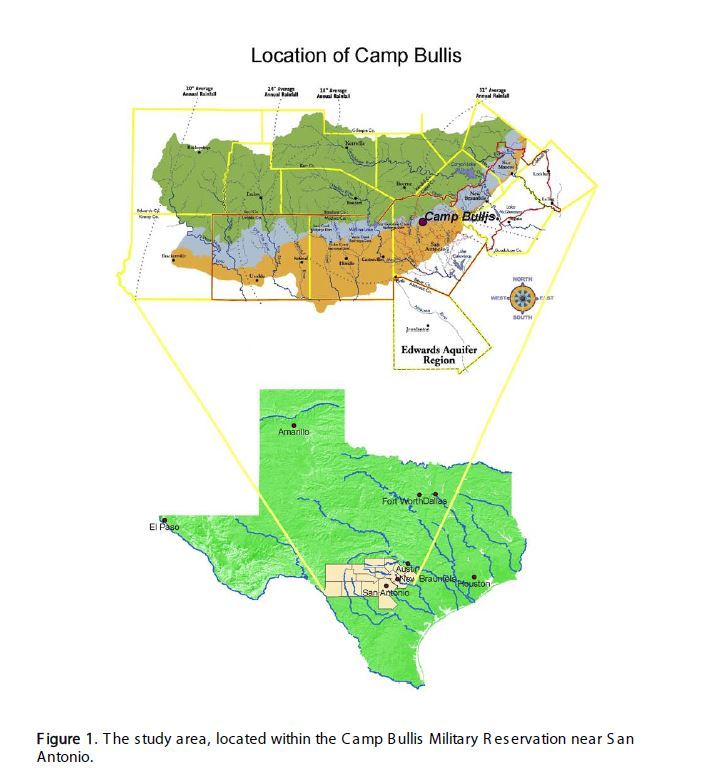|
The influence of woody plants, Ashe juniper in particular, on recharge in the Edwards Plateau is poorly understood, partly because it is difficult to make direct measurements of recharge. In this study, we determine recharge characteristics for two caves within Camp Bullis and evaluate if recharge changes after removing the overlying juniper. In addition to evaluating recharge characteristics under natural rainfall conditions we conducted extensive rainfall simulation and irrigation experiments over the cave surfaces. In addition to recharge, measurements of surface runoff, interception and stem flow were made. Natural recharge and rainfall patterns were monitored from 2004-2009. One key finding of this study was that recharge was highly episodic and only occurred for relatively large rainfall events. Significant recharge only occurred for rainfall events greater than 60 mm. During that five years that recharge was monitored, most of the recharge occurred during three relatively short wet periods. The other key finding was that there was no apparent change in the relationship between rainfall and recharge after three trees were removed. In other words, we saw no evidence that tree removal increased the amount of water recharging the caves. A limitation of this study is that the time period following cutting of the trees was relatively short (1-1.5 years) and not long enough to definitely rule out the possibility that reducing tree cover may lead to higher recharge.
|

